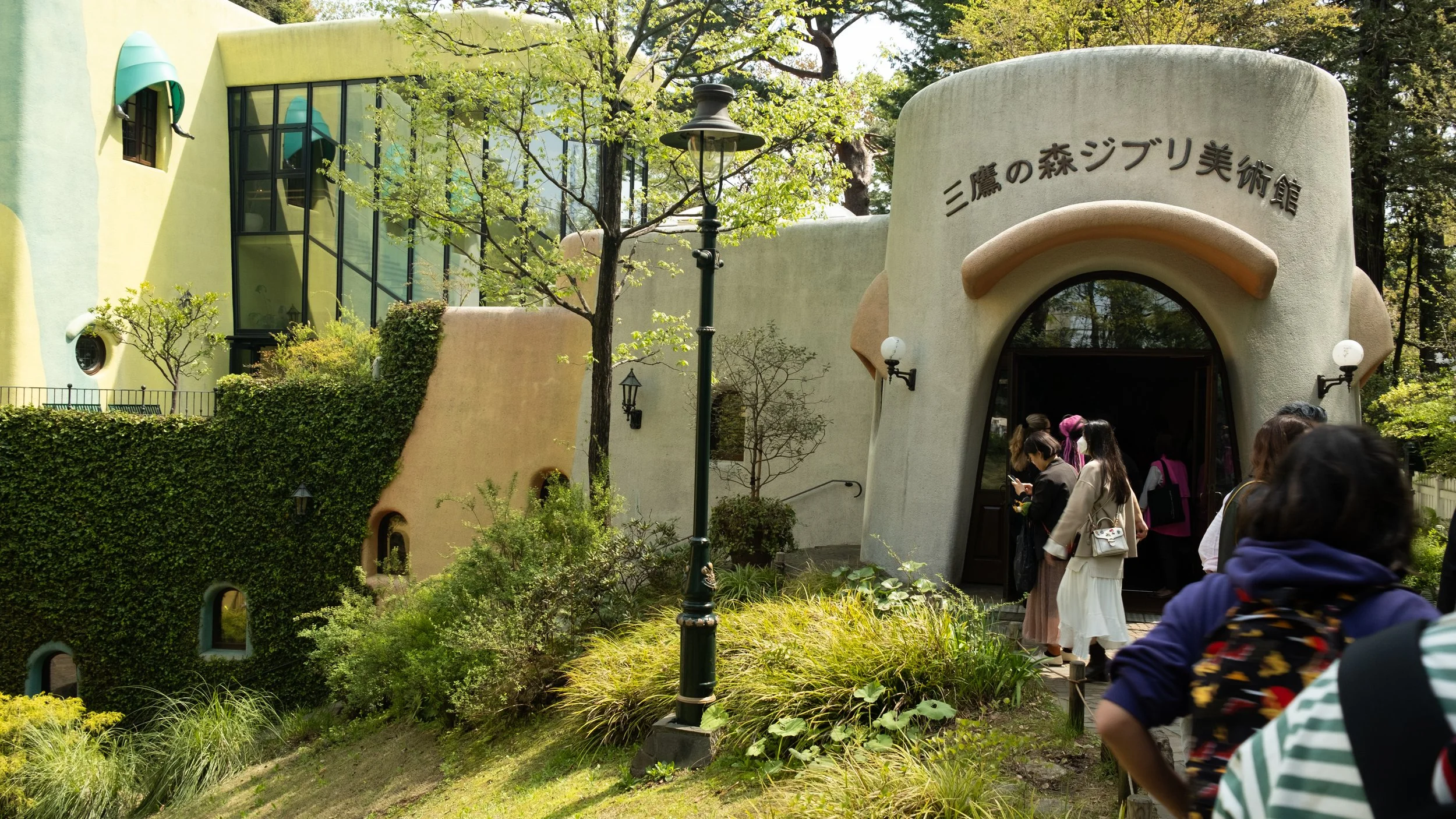The Magic Of The Studio Ghibli Museum, Tokyo
Written by Damien Boneham.
I originally intended to do a blog post each day of our Japan trip - but every day has been so jam packed with sight-seeing, walking, shopping, eating and drinking that I just haven’t had the energy. Holiday vibes.
Instead of daily posts - I aim to write a handful of blogs based on specific things we've seen that I think are relevant to World Tree, as well as a breakdown of what we did in Tokyo, Kyoto and Osaka.
Let’s start with our visit to the Studio Ghibli Museum in Tokyo. We booked tickets for this a month in advance, as it sells out in minutes. We had to download a VPN and order the tickets as if we were already in Japan, as the English version of the website would not load. We learned these tips from this helpful blog post - How to Buy Ghibli Museum Tickets for Dec ‘22 - Mar ‘23.
Getting the tickets isn't as simple as a confirmation email with the tickets attached. Once we arrived in Japan, we were instructed to visit a Lawson a convenience store (turns out there’s thousands of these stores across Japan) scan a QR code at one of the Loppi ticket vending machines, then take the printed vouchers to the store clerk and they exchanged the vouchers for the tickets.
I’m going to keep this as spoiler free as possible, as I encourage anyone who visits Tokyo to organise tickets to the museum if they have time.
We boarded an express train from Shibuya to Kichijōji Station. HOT TIP - grab a cream puff from Beard Papa at the train station, they are divine.
Cherry blossoms at the Inokashira Park. Photo credit - Damien Boneham.
The museum is situated at the edge of the beautiful Inokashira Park. The walk to the museum was very pleasant; the last of the cherry blossoms were still in bloom, and it was mostly locals walking along the picturesque lake. We caught glimpses of the colourful walls of the museum behind tall trees and lines of hedges, nestled in as if it was always part of the park. The exterior of the building reminded me of a dialled back Gaudi house, with its curves and colourful walls. At the same time it is very magical in its own way, without showing too much on the outside.
Stain glass windows depicting characters like Ponyo, the Forest Spirit from Princess Mononoke and Porco Rosso are visible as you line up outside, teasing what awaits in the museum. Photography is strictly prohibited inside, which I think makes sense for a lot of reasons; avoiding selfie bottle necks and ensuring that everything you see is a surprise.
Visitors line up before entering the Studio Ghibli Museum. Photo credit - Damien Boneham
Once you step inside, you feel like you’ve entered a Studio Ghibli world. Not because it is covered in Ghibli merchandise or imagery, but the architecture itself. The curved wooden walls, winding staircases, and bridges that connect the floors. It feels magical without being over the top, as if Hayao Miyazaki was a character in one of the films, and this was his workshop.
Despite the museum being an incredible window into Miyazaki’s creativity, I didn't see a single photo of him, nor do I remember any mention of the man at all. I suppose this makes sense as he directed the production of the museum, so naturally it is about the studio overall and its works. This only registered after I walked through what I’ll call the “animation workshop” section that I instinctively assumed was depicting Miyazaki’s workspace. After chatting with Steph, she mentioned how interesting it was that there wasn’t a single mention of Miyazaki, instead all of the little pieces of inspiration such as European style puppets, traditional Japanese painting, aeroplane models, old Japanese and Western comics and all manner of trinkets painted this picture of Miyazaki’s mind, and the foundations his studio‘s masterpieces.
A main takeaway from the museum was that the Ghibli quality of animation is such an endeavour. This was shown through the scrapbooks depicting different rocks, plants, birds, sea-life, and other natural imagery that inspired the worlds that Ghibli films are set in. Every piece of water coloured concept art that covers the walls is a breath-taking piece of art in isolation, but then you remember that these sketches are just single frames of an entire animated film. The weight of the work starts to sink in, and you really get a sense of how dedicated this team and its director was.
The museum was spectacular because it revealed all the small elements that inspired and influenced the many worlds that Studio Ghibli has created. At the same time this cheerful museum felt daunting as the sheer scale of the work involved is hard fathom. It’s not just the work load that stuck out to me - it’s this feeling that Miyazaki must create these works because his brilliant imagination compels him to do so.


